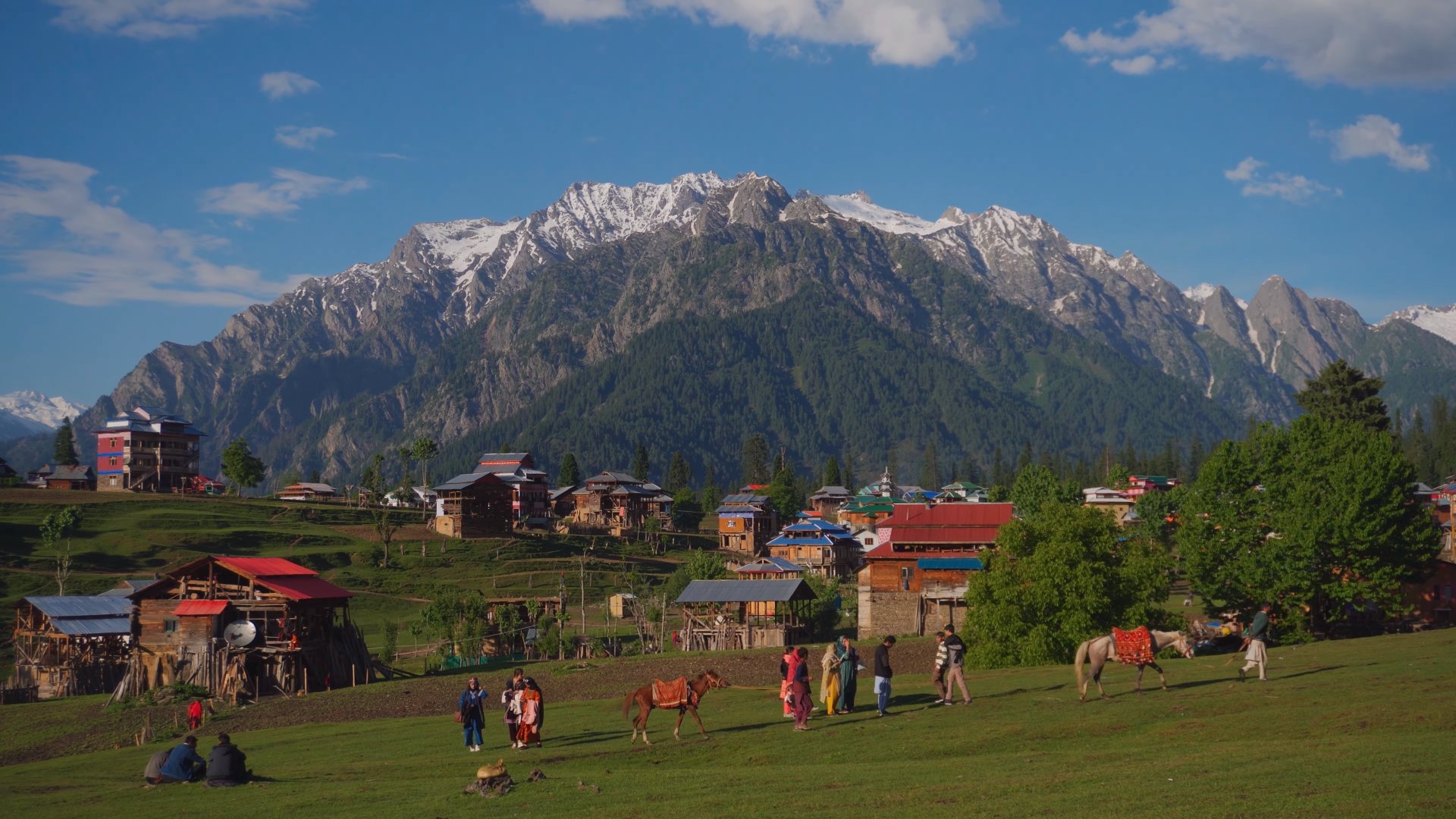Tourist Attractions In Pakistan
Naltar Valley, located 42 km from Gilgit in Gilgit-Baltistan, Pakistan, is a forested paradise at 3,000 meters, renowned for its vibrant lakes, pine forests, and Pakistan’s largest ski resort. Accessible via the Naltar Expressway through Nomal, it features two villages—Naltar Bala (upper) and Naltar Paain (lower)—and the Naltar Wildlife Sanctuary, home to snow leopards and markhor., Famous for six lakes, including the multicolored Satrangi Lake, and winter sports under Pakistan Air Force supervision, it offers trekking, camping, and cultural experiences., Despite challenges like rough roads requiring 4x4 jeeps and limited facilities, its serene beauty and adventure opportunities make it a must-visit.
Arang Kel, perched at 8,379 feet (2,554 m) in Neelum Valley, Azad Jammu and Kashmir, is a lush meadow and village dubbed the “Pearl of Neelum Valley” for its verdant plains, pine forests, and Himalayan vistas. Located 2 km from Kel and 161 km from Muzaffarabad, it’s accessible via a 2-3 hour hike or a 1-km Pakistan Army-managed chairlift, offering thrilling views over the Neelum River. Historically a shepherds’ grazing ground, it’s now a tourist haven despite challenging roads, limited facilities, and LoC proximity, which requires an NOC for foreigners. Its serene beauty, Kashmiri hospitality, and adventure trails make it a bucket-list destination, though winter snows render it inaccessible.
Taobat, the last village in Neelum Valley, Azad Jammu and Kashmir, lies 200 km from Muzaffarabad and 39 km from Kel, near the Line of Control where the Kishanganga River enters Pakistan as the Neelum River. At 2,500 meters above sea level, this historic village in Gurez Valley is dubbed the “Jewel of Azad Kashmir” for its lush meadows, pine forests, and snow-capped Himalayan peaks. Known for its Taobat Waterfall, 400-year-old wooden mosque, and trekking trails, it attracts adventurers and nature lovers despite challenging, unpaved roads and limited amenities like hospitals or reliable communication. Heavy snowfall isolates Taobat for six months, but its cultural heritage and pristine beauty make it a must-visit.
Kalash Valley, nestled in the Hindu Kush mountains of Chitral, Khyber Pakhtunkhwa, Pakistan, is a cultural and scenic gem home to the Kalasha people, a minority of about 4,000-5,000 who practice a polytheistic religion tied to ancient Hinduism. Comprising three valleys—Bumburet, Rumbur, and Birir—it’s famous for vibrant festivals like Chilam Joshi, unique traditions, and lush landscapes. The Kalasha’s colorful dresses and open graveyards fascinate visitors, but over-tourism and cultural erosion threaten their heritage. With myths of descent from Alexander the Great’s armies, Kalash Valley offers an immersive experience for culture enthusiasts and nature lovers.
Kumrat Valley, a pristine alpine valley at 2,400-3,100 meters (7,800-10,170 feet) in Upper Dir District, Khyber Pakhtunkhwa, Pakistan, is a haven of deodar forests, snow-capped Hindu Raj peaks, and the Panjkora River. Known for its lush meadows, waterfalls, and attractions like Jahaz Banda and Katora Lake, it draws adventurers and nature lovers. Local folklore, such as tales of Prince Kumrat, adds cultural depth. Rampant commercialization and littering threaten its raw beauty, but Pashtun hospitality and unspoiled landscapes make it a must-visit.







